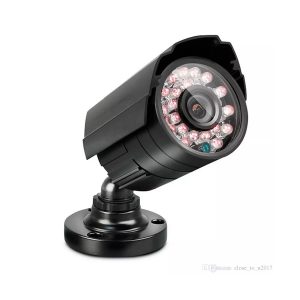Nowadays all of the best CCTV cameras come with night vision capabilities. Night vision is the ability to record images or videos in low light conditions. The street CCTV cameras, cameras used for wild-life photography used at night time, etc have night vision capabilities. If you have seen the footages from Ghost-hunting TV shows or the Predator movies you would know what night vision camera footages look like. The security cameras use the same technology to capture video in the night. Any type of camera, be it Dome, Bullet or PTZ can be a Day/Night camera if it is equipped with the technology. Some cameras are only meant for Night vision. The minimum illumination required by the cameras to capture videos is measured in lux. For example, the Honeywell 2 MP 1080P 30m IR Dome Camera has a minimum illumination specification of 0.01 lux.
![]()
![]()

Night vision is enabled in a camera using two different technologies. The first one and the most common of the two is by using IR rays. IR or Infrared rays are invisible to the human eye. But the camera lenses and sensors can capture and process IR rays along with the normal light. Most security cameras are IR light based cameras. They have small LEDs in the front of the camera. These LEDs get activated in low light condition and flood the field of view of the camera with IR light. This light then gets reflected by the objects in the area and is captured by the camera. The IR lights and sensors remain shut in the daytime when there is ample amount of daylight. The cameras have something known as IR cut filter which cuts off the IR light during the daylight but allows it during low-light.
The IR light images are mostly captured in black and white because the human eye can differentiate black and white better than any other shades of color. However, we will soon see that the other technology sometimes uses black and green to record low light images and videos. Here is a list of some of the popular Day/Night cameras in wide use.
The other technology is used in night goggles. In this technology, lenses are used to direct more light to the eye during the night time. The cameras have what is known as the “Intensifier Tubes”. These tubes convert the light particles known as photons into electrons. These electrons then strike a phosphor screen after going through a multiplier. The phosphor screen creates flashes of light in green color. The shades of the green are determined by the amount of light originating from the object as well as its color. Green is used because the human eye is most sensitive to green. Such goggles are mainly used for military purposes. A regular camera can do something similar with long exposure photography. You can use this technology to capture city skylines in the night.
There are also some lesser known technologies that can enable night vision. One of them is thermal imaging. Some animals have the thermal imaging capabilities like the snakes through special organs called as bolometers. There are cameras available that use thermal imaging to capture videos.
